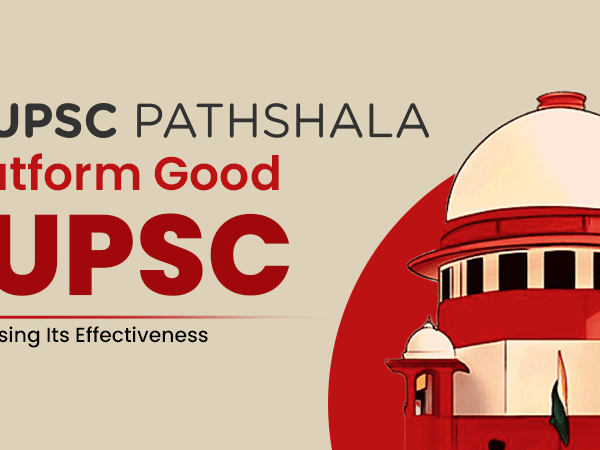On the 8th of February 2017, for the first time ever, a sitting high court judge was hauled up before the Supreme Court to answer for a contempt charge. A seven-judge bench of the Supreme Court issued contempt notice to Justice C.S. Karnan of the Calcutta High Court.
In a reply, Justice Karnan invoked his identity as a Dalit and issued a letter stating that “the characteristic of this order clearly shows the upper caste judges are taking law into their hands and misusing their judicial power by operating the same against a SC/ST Judge with mala fide intention of getting rid of him”.
In 2011, Karnan had called a press conference to accuse a fellow High Court judge of caste discrimination on the ground that the judge who sat next to him “deliberately” touched him with his foot.
In 2015, he interrupted arguments going on in another courtroom in the Madras HC regarding judicial appointments, demanding to be heard. In April 2015, he began suo motu contempt proceedings against the Chief Justice of the Madras High Court, Sanjay Kishan Kaul, accusing him of harassing and belittling him because he was a Dalit and by giving him “insignificant and dummy” portfolios.
Karnan then accused Kaul of corruption in February last year, following which the top court transferred Karnan that month, which he issued a stay order on. When a two-judge Supreme Court bench lifted his stay order, he asked the Chennai police to book a case against the two judges under the SC/ST (atrocities) Act. The top court threatened to haul him up for contempt for some of the statements that he made, but Karnan apologised saying that his “mental balance” was severely affected. He finally took charge at the Calcutta high court after a private meeting with the then-Chief Justice of India TS Thakur.
Justice Karnan later sent a letter to the Prime Minister with a list of sitting and retired High Court and Supreme Court judges whom he wants “interrogated” by investigative agencies on the grounds of corruption.
Karnan’s shenanigans have exposed many weaknesses in the higher judicial institutions, and point to much more than the acts of just one man.
Using its contempt jurisdiction, and by removing him from administrative and judicial work in early February, the Supreme Court has tried to ensure that he cannot cause further damage. There has been a pattern to most of these incidents — he makes an allegation against fellow judges, no proof is offered and he doesn’t push it further, until the next incident and provocation. His judicial work has also stirred controversy — recently, he had a verbal altercation in open court with his fellow judge in the Calcutta high court where they differed in controversial circumstances over granting bail to the accused in the Kolkata flyover collapse case.
This highlights a constitutional problem that the framers of the Constitution did not, for some reason, foresee: How do you discipline a judge short of impeachment?
Impeachment by Parliament is a long-drawn-out and difficult process. As it should be in a constitution where judicial independence is rigorously protected. Whatever “misbehaviour” a judge is alleged to have committed should be serious enough for Parliament to sit up and take notice before removing her or him from office. It is also the only sanction that can be imposed on an erring judge. This leaves us with two problems: What to do when Parliament is disinclined to act on serious misbehaviour, and how to address less serious breaches of judicial discipline.
At present, there are certain informal measures that can be taken against an erring judge: change their workload to different cases, relieve them of all judicial work, or transfer to another high court. The first two can be done by the chief justice in charge of the high court, while the last requires the cooperation of the government. There is no way for the public (or even the judge) to know why a judge might have been “penalised” this way and what behaviour crossed the line. There also remains a gap in severity between these measures and impeachment. The contempt proceedings suggest an attempt to fill this lacuna in the institution.
However, a question also needs to be asked: How did someone who seems to make headlines more often for non-judicial than judicial reasons, get appointed as a judge of a High Court? And are there others like him within?
The Appointment Proc
A significant change occurred in 1993 with the Supreme Court’s judgment in SCAORA v Union of India, which brought the appointment of judges (especially senior most top court judges) under the judiciary. Today, the appointment process follows the recommendation by the five senior most Supreme Court judges (including the Chief Justice of India), which is binding on the Centre that issues the formal order of appointment. Known as the ‘collegium method of appointment’, the process is utterly opaque and arbitrary, causing discomfort everywhere.
Ganguly himself, now retired, when asked by the media about Karnan, could not recall why Karnan was elevated in the first place. Karnan’s bio on the Calcutta HC website states that after graduating from Madras Law College in 1983, he practiced civil law in the Madras High Court, was appointed legal adviser for Metro Water, was government advocate for the state and later, the Centre. However, a brief search of legal databases shows Karnan does not seem to have had a thriving practice or been involved in important cases before the Madras High Court. Ganguly has reportedly said that Karnan was elevated keeping in mind the need to have Dalit representation in the higher judiciary. “He was representing a particular caste that should have been represented in the choice of judges. Therefore, I thought he should be considered,” he said.
The representation of Dalits has been and continues to be abysmally low in the higher judiciary. The most reliable figures are from 2002, when it was found that there was only one judge in the Supreme Court and only 25 out of 625 HC judges who belonged to the Scheduled Castes. No Dalits currently serve in the Supreme Court, and there are no reliable figures maintained either by the Supreme Court or the Department of Justice on the representation of Dalits in the higher judiciary. Anecdotally, however, it is unlikely that more than five percent of High Court judges are Dalits.
The controversy surrounding Karnan is part of a larger problem in the judiciary rather than a one-off problem. Late in 2016, the Supreme Court initiated contempt proceedings against former SC judge Markandey Katju for his ill-thought-out comments against judges. Multiple judges of High Courts and the Supreme Court have faced accusations of sexual harassment. In 2011, two High Court judges, PD Dinakaran and Soumitra Sen, faced impeachment proceedings for corruption and abuse of office, but resigned before removal. Nirmal Yadav of the Punjab and Haryana High Court also faced charges framed by a CBI court for allegedly receiving a bribe as a sitting judge in 2008.
Credibility is a problem that is plaguing the judiciary. Never mind that it’s quick enough in punishing disobedience through contempt, the judiciary will always find it hard to command the respect of citizens if it’s not run honourably and by the right men and women. The blame for the poor choice of judges in the 1970s and 80s could perhaps be attributed to the government, but currently the judiciary lacks such excuses.
Even admitting that sometimes a poor appointment might have been made, there has been no effort to create a transparent mechanism to discipline judges who overstep the lines of propriety. The in-house procedure to examine and act on complaints against judges is seldom used and, in any case, works with little transparency. Like with appointments, the whole process is shrouded in secrecy with corridor gossip substituting for facts and informed debates. Those with legitimate grievances against a judge have little recourse from the judiciary itself, or for that matter, any other institution.
Similarly, it must also be difficult for Karnan to be caught in such a caste-lopsided institution, and it remains to be seen how much and to what extent Karnan will fight the SC’s latest move. The next date of hearing in the SC is 10th March, and he is due to retire on 12th June this year.
The contempt case is still sub judice but it’s not clear what the Supreme Court’s endgame in these proceedings is. Its powers under the contempt jurisdiction are vast but do not extend to removing a High Court judge, something that can only be done through impeachment by the President. Whatever they choose to do in the context of Karnan, the SC judges must be aware that there is a larger problem that they cannot wish away — that of a judiciary whose credibility is slowly ebbing away.






Good read!
Thank you! Stay tuned for more such articles.